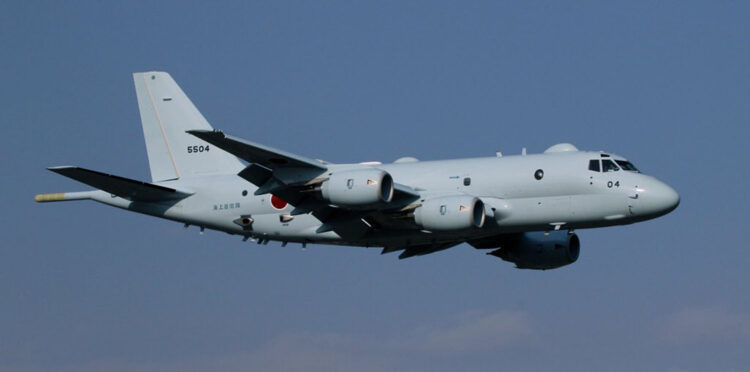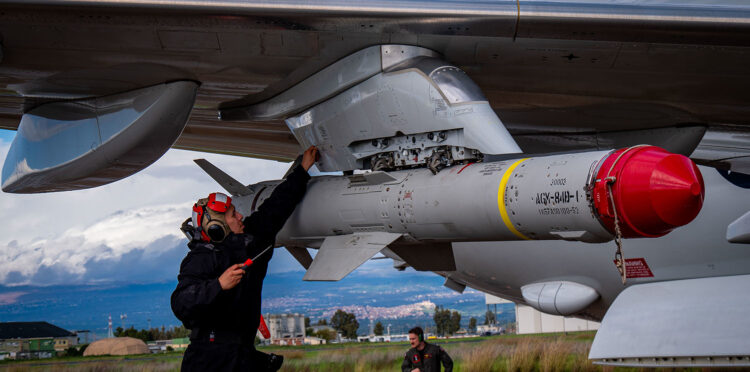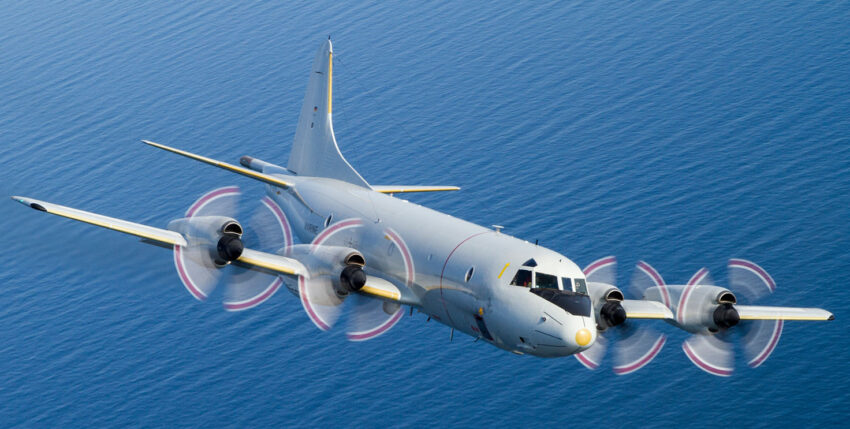To mark the 15th anniversary of the decommissioning of Naval Air Wing 2, I posted a tweet in August 2020. It obviously struck a nerve, because I rarely received so many comments and rarely did a post trigger such a broad discussion. Even today, the capability that was lost to the navy and later to the Bundeswehr is obviously still sorely missed. Of course, some of the commentators tried to identify the inspector or minister responsible for this loss. However, knowing the result, it is always easy to condemn without even knowing all the possible options for maintaining an expensive capability with a shrinking budget. Such discussions don't help anyway. The Dutch comrades certainly went through a similar experience when, faced with comparable budgetary challenges, they had to decide whether they wanted to keep their submarines or their submarine hunters. The loss of the P-3C Orion based on this choice still hurts them today. For us naval aviators, the Dutch sale offered the option of retaining the capabilities of the Breguet Atlantic BR 1150, even though we didn't have the funds to buy a new one. The price, however, was that the used aircraft also came in significantly smaller numbers (8 instead of the previous 15 MPAs).
However, most commentators debated whether a navy of our size could afford to rebuild a fighter-bomber component, or whether a navy that wants to be powerful should not even afford an airborne naval capability. Land-based for regional, carrier-based for a global capability. And if this cannot be achieved alone, whether it is not time for a European cooperation project to realise precisely this capability.
The effectiveness of a modern naval fighter-bomber with the right armament against ships and land targets is still undisputed today. But is the right response to yesterday's challenges still relevant tomorrow? Aren't fighter-bombers themselves more vulnerable today than in the past? Don't even somewhat larger navies have considerable problems maintaining their mobile fleets because the jet component eats up all the money? Is it really not possible for the air force to reliably fulfil this task in a joint approach? What about land-based missile systems or the combination of unmanned systems and airborne command and control platforms?
While I personally consider the resurrection of a naval fighter-bomber component in Germany to be utopian, I am pleased about the broad discussion and believe that it is important. After all, it is not the aircraft, but the capability that it represented that was and is of immense importance for the assertiveness of a navy.
In order to determine which capabilities a navy needs, the mission and threat must be analysed. The mission of the German Navy includes the protection of maritime trade and transport routes, the control or denial of defined sea areas for an opponent in and from the maritime domain. To do this, it must first be able to reconnoitre and create a picture of the situation, then achieve an effect against an opponent and maintain its own forces. This is also nothing new in principle.
In contrast, the threat has changed. Digital data transmission and satellite-based reconnaissance and communication are vulnerable to cyber attacks, the electromagnetic spectrum has become more significant, hypersonic missiles and swarm attacks by unmanned systems require new defence mechanisms and concepts, response times have become shorter, submarines quieter and diving times longer.

To counter this, we must continue to operate over a wide area and be able to quickly and flexibly form centres of gravity. We must be able to act effectively at a distance with a high level of self-protection and thus act as a deterrent. However, due to the short reaction times and long weapon ranges, we must first have one thing: a situation picture that is constantly available. This requires the use of available satellite systems, but also airborne reconnaissance means that can consolidate satellite images or provide a substitute if they are unavailable. However, high-value assets such as maritime reconnaissance aircraft or fighter-bombers should not have to be used to create a baseline picture. On the one hand, because you are vulnerable when creating a situation picture. Secondly, because flying hours are valuable and should therefore be used specifically on the basis of an existing situation picture for verification, guidance or effect.
When it comes to taking effect, a fighter-bomber still offers many advantages. It is true that satellites and unmanned systems have relativised the range advantages in target acquisition and sea- and land-based missiles have achieved ranges that are based on third-party target data (third party targeting), compensate for the loss of fighter jets. However, speed, a small radar retroreflective surface and assertiveness still offer the element of surprise, a rapid shift in centre of gravity and the ability to react. However, in view of the constant development of radar and missile technology for defence against fighter aircraft, this assertiveness comes with a high financial price tag. While this expenditure is still largely affordable for air forces without any alternative and in a steady state, the German Navy would have to go to the immense expense of building up expertise, infrastructure and organisation that has been lacking for 15 years and, of course, procuring the weapon systems itself.
On 3 January, the Inspector General of the Bundeswehr, General Eberhard Zorn, expressed his expectation in an interview with Welt am Sonntag that the post-corona budget would necessitate a downward adjustment of NATO targets in all countries of the alliance. To tackle the immense investments for the reconstruction of a fighter-bomber component at such a time would have unacceptable displacement effects. The necessary political support for this would be difficult to generate at best. Fighter-bombers primarily bring their capabilities to bear at the high end of a conflict. This high end has been defined as the benchmark for defence projects. However, it is easier to find support for what contributes to mission fulfilment every day in mandated crisis operations. However, naval fighter-bombers could only provide quantitative support for the air force's systems, not any added value in terms of content. In view of the numerous other areas in which the Navy has to counter the loss of capabilities, I believe that the rebuilding of a jet component is neither financially nor in terms of personnel feasible.
Nevertheless, the German Navy needs its own capability for naval warfare from the air. In times of limited resources and too many missions for another branch of the armed forces, the mission that is not their own is always neglected first. This was already the case when the Tornado component was handed over to the air force. Only with its own capability can an inspector ensure that trained personnel and ready-to-use weapons and weapon systems are available for the tasks it has prioritised. If this capability also contributes to the survivability of other parts of the fleet, the operational value of the entire fleet is reduced if it is not available. Based on the same consideration, it must be stated that a joint European solution is desirable, but currently appears to be difficult to realise in this area of responsibility. Attempts to make flight hours of the MPA nations available to all member states for a fee within the framework of a NATO "Strategic Defence Initiative" failed due to a lack of interest. Similarly, considerations to create a European MPA command based on the concept of the European Air Transport Command (EATC) were not pursued. While this is certainly conceivable for the image reconnaissance part of the task, the use of national databases on foreign and own submarines in submarine hunting represents a considerable hurdle for such cooperation.

However, the fact that a company's own capabilities are required does not mean that the corresponding capability carriers are needed in large numbers. Even a small number enables the creation of operational concepts, the development of tactics and the procurement and integration of suitable weaponry. If an armament is introduced into the Bundeswehr that can also be integrated into the Eurofighter or its successor, more powerful components from the German Air Force can be quickly integrated in larger numbers if necessary and if there is a correspondingly high priority among the armed forces in order to complement their own initial capabilities. In this way, both the Chief of Defence Navy and the Chief of Defence Air Force each retain sovereignty over their own capability carriers while still building up a joint capability.
So fighter-bombers for the German Navy after all, only fewer? No, because the aim is still to have a rudimentary capability; to have points of contact with the air force. An MPA with its high range and payload can also serve this purpose for effective sea-target missiles. Of course, an MPA is not a fully-fledged replacement for a jet due to its lower speed and manoeuvrability, but also because of its large radar retroreflective surface. However, radar retroreflective surfaces and limited penetration capability could be partially compensated for by modern electronic countermeasures and protection (EloG/SM) using jamming or dummy target generation. Unmanned components for complementary reconnaissance and target acquisition, especially in contested environments, could further reduce the risks. Should the Bundeswehr also be equipped with armed unmanned aerial systems (UAS) in the future, these could also play an important supplementary role, as the manned system could remain as a command platform for the use of weapons outside hazardous areas. Even when deployed from the home base, such a division of tasks would fulfil the intended requirements of not deploying "drones" from the home country.
The P-3C Orion mentioned at the beginning, which came into the German Navy almost by chance, was central to the return to naval warfare from the air. With the cancellation of the modernisation of the P-3C, this option is now on the brink. The interruption of operations in the EU Operation Irini at the beginning of 2021 due to the clear standstill has already given an indication of how resilient the deployment of the remaining P-3Cs will be over the final years of use until 2025. Depending on the payload, range and integration options for weapons, sensors and unmanned systems in the mission system, the choice of successor will inevitably have a major influence on whether re-entry into naval warfare from the air remains an option, whether further options open up or whether such considerations are ruled out at least until 2035.
What does this mean for naval aviation? Firstly, it is important not to dream of new capabilities, but to ensure that we do not lose further capabilities, first and foremost airborne sub-hunting. Only this can serve as a basis for regaining some fighter-bomber capabilities and securing others through the skilful integration of air force and other forces, without getting into the resource conflict of building up our own fighter-bomber component. MPAs therefore offer a basic capability that can be flexibly and scalably expanded with the appropriate armament and additional (including unmanned) components in a modular system. They also provide the basis for creating operational concepts in order to integrate additional forces into naval warfare from the air. MPAs are not a fully-fledged replacement for fighter-bombers, but they are a versatile and standoff-capable operational tool across the entire spectrum, from crisis to alliance defence, which also provides basic capabilities and capabilities in airborne naval warfare. stepping stone represents.
This article and my assessment of the potential of MPAs will certainly trigger further discussions. And that is a good thing. One thing is certain, however: MPAs will continue to be realistically realisable in the German Navy in terms of personnel and finances.
Captain Thorsten Bobzin is commander of the naval aviation command.
Text: Thorsten Bobzin; Photos: Bundeswehr/Sascha Linkemeyer, US Navy, Japan Maritime Self Defence Forces









2 responses
Since I doubt that the Bundeswehr is in a position to do justice to BV and LV, it would be surprising if the Navy were to make an exception.
The possibilities of an MPA should be indisputable. In 2007, we went even further with an Airbus A 319 cell and P 8 command and control systems.
The interim solution you are hoping for has not yet been financed and there is no 25 million bill in parliament.
Politicians are talking about guidelines for the Indo-Pacific and protecting sea lanes. However, they are already giving up another capability of the German Navy in 2021.
The UK made a mistake by decommissioning the Nimrod as an MPA, but reversed this decision by purchasing the P8.
Why can't we make a purchase decision if we want to maintain the ability of an MPA?
What does the SPD's defence spokeswoman actually say about this?